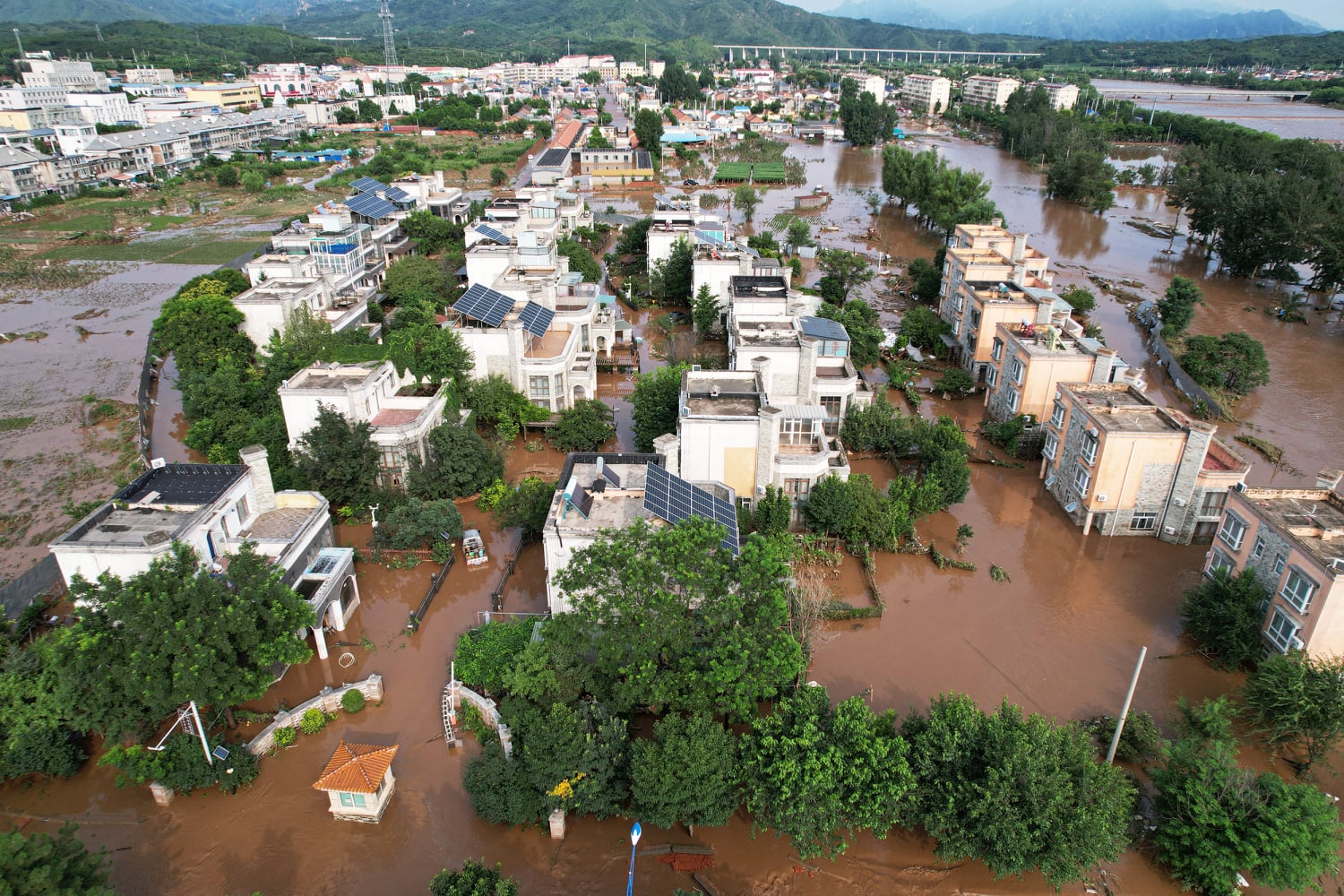Severe flooding has devastated areas in and around Beijing, leading to significant loss of life and widespread disruption. According to local authorities, at least 38 people have died as a result of the extreme weather, which brought rainfall levels close to what the region typically receives over an entire year. The disaster marks one of the most intense flooding events in recent memory for the Chinese capital and its surrounding provinces.
Initiated by a potent weather system that halted over northern China, the heavy rainfall led to rivers bursting their banks, inundation of communities, and crucial infrastructure collapsing under stress. Streets turned into waterways, metro services were suspended, and emergency teams faced challenges in reaching stranded inhabitants as the waters surged rapidly throughout both city and countryside areas.
The extraordinary amount of rain—recorded in certain regions at close to 750 millimeters (30 inches) within several days—has inundated both natural terrains and city drainage systems. Weather experts observed that although summer storms are typical in northern China, the severity and length of this occurrence were far beyond historical averages. Several monitoring locations observed unprecedented rainfall levels, heightening ongoing worries about the rising occurrence of severe weather conditions associated with climate change.
Among the most affected regions were the suburban areas in the western part of Beijing and sections of the adjacent Hebei Province. Numerous deaths happened due to houses falling down or cars being carried off by rising waters. Emergency services mobilized thousands of first responders, including military forces, to help with evacuations, provide assistance, and strengthen vulnerable infrastructure.
In a deeply unfortunate event, a team of emergency personnel trying to evacuate residents was unexpectedly overtaken by a rapid increase, leading to numerous fatalities. Their sacrifice has been broadly acknowledged as a powerful reminder of the risks encountered by those operating on the forefront of disaster response.
Thousands of people have been displaced from their homes and are now residing in temporary shelters. The flooding has also disrupted transportation, suspended industrial operations, and damaged crops, raising concerns about the longer-term economic and humanitarian impact. Local governments have pledged financial assistance to affected families, while national agencies have dispatched additional resources to accelerate recovery efforts.
Beijing’s urban layout, marked by a mix of modern high-rises and older low-lying neighborhoods, posed unique challenges during the floods. Despite recent investments in drainage systems, the city’s infrastructure proved insufficient to handle rainfall of this magnitude. Urban planners have acknowledged the need for more resilient systems capable of managing extreme weather, particularly in light of shifting climate patterns.
Images from satellites taken before and after the storm illustrate significant alterations in the landscape: highways that were once busy are now calm lakes, and farming areas have transformed into marshlands. Specialists in environmental studies caution that the restoration might require months, particularly in low-lying regions susceptible to flooding, where water diminishes at a slow pace.
Meanwhile, public health officials are monitoring for secondary risks such as waterborne diseases, contamination of drinking water, and the spread of mold in damp buildings. Medical teams have been dispatched to affected areas, equipped with emergency supplies and portable treatment units.
Este desastre ocurre en medio de los esfuerzos más amplios a nivel nacional para mejorar la preparación de China ante desastres y las estrategias de adaptación al clima. En años recientes, varias provincias han sufrido desastres relacionados con el clima, que van desde inundaciones hasta sequías e incendios forestales. Los expertos están pidiendo una planificación más proactiva, que incluya sistemas de alerta temprana, inversión en diseño urbano sostenible y una mejor coordinación entre los gobiernos municipales y provinciales.
The administration has announced a mourning period to honor those who perished and is thoroughly examining ways to enhance emergency response procedures. In a speech made after the catastrophe, officials highlighted the necessity of focusing on public safety and updating vital infrastructure.
While the immediate focus remains on search and rescue efforts, attention is also turning to questions about long-term resilience. How can rapidly growing cities like Beijing adapt to increasingly erratic weather? What policies are needed to ensure that new developments are flood-resistant? And how should communities be educated and equipped to handle emergencies?
Esta inundación actúa como un claro recordatorio de la fuerza de la naturaleza y la imperiosa necesidad de ajustar los entornos urbanos para resistir los efectos impredecibles del cambio climático. También destaca la significación de la solidaridad comunitaria y la preparación en momentos de crisis.
As cleanup operations continue and the nation begins to assess the full scope of the disaster, stories of survival and heroism are also emerging. Volunteers, medical personnel, neighbors, and strangers have come together to provide food, shelter, and support, showing resilience in the face of tragedy.
The journey to healing has started, yet for a large number of people, the wounds caused by the flood—both tangible and psychological—will persist. In the upcoming weeks and months, reconstruction initiatives will aim not only at repairing destroyed structures but also at strengthening the systems required to avert events of this magnitude in the future.
In the end, the disastrous flooding in the Beijing area goes beyond a simple weather occurrence; it serves as a wake-up call. As communities grieve, reconstruct, and adjust, the insights gained here could contribute to creating a safer and more resilient future.




